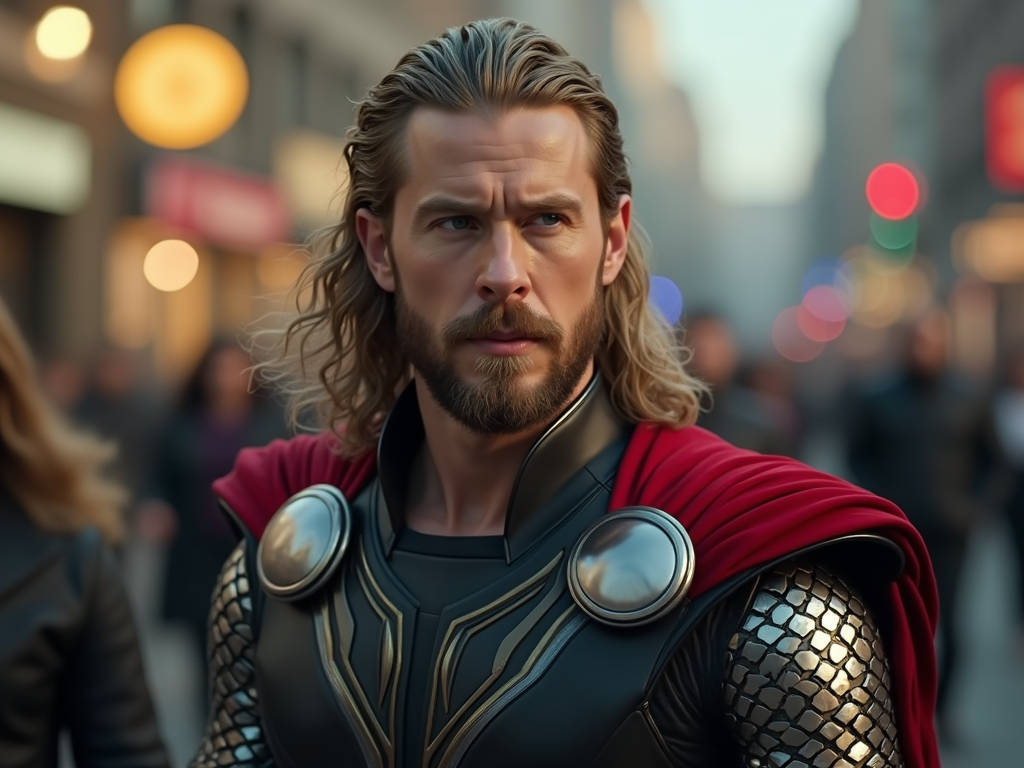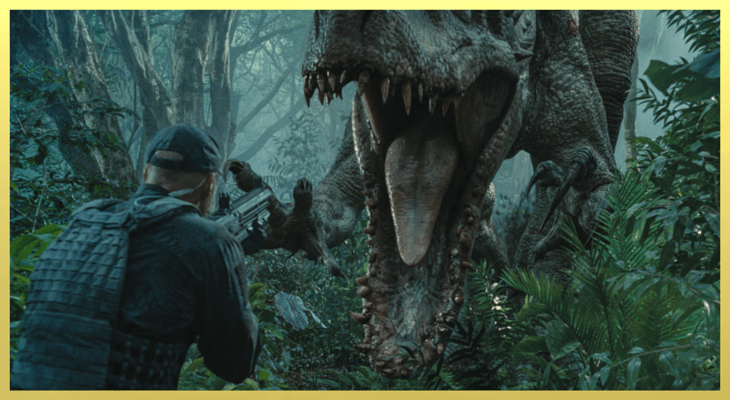How Marvel’s Thor Ragnarok Teaser Trailer Saved a Dying Franchise with 2 Minutes of Led Zeppelin
Here’s a fact that’ll make you rethink movie marketing forever: the Thor Ragnarok teaser trailer didn’t just promote a movie. It literally saved a franchise from extinction.
Marvel was panicking in early 2017. Thor: The Dark World had become the MCU’s biggest disappointment, grossing $200 million less than Iron Man 3 despite releasing the same year. Chris Hemsworth was openly frustrated with his character. Fans were checking out.

The God of Thunder was becoming the god of yawns.
Then Marvel did something unprecedented. They hired a comedy director from New Zealand, paid a fortune for a Led Zeppelin song, and created a 2-minute teaser that completely reimagined what a superhero could be.
That teaser didn’t just market a movie—it performed CPR on a flatlining franchise. The result? An $850 million box office haul and a complete transformation of how studios approach franchise marketing.
This isn’t just another trailer analysis. This is the story of how strategic marketing saved Thor from becoming the MCU’s first major failure.
Let’s get brutally honest about Thor’s pre-Ragnarok status. The franchise wasn’t just underperforming—it was actively harming the MCU brand.
Thor: The Dark World didn’t just make less money than other Marvel films. It became the first MCU movie that audiences forgot existed. Think about it. When’s the last time you heard someone quote a line from The Dark World?
Exactly.
The numbers were devastating. While Iron Man 3 crossed the billion-dollar mark in 2013, Thor’s sequel limped to $644 million. That’s not just a gap—that’s a canyon. The Thor Ragnarok teaser trailer release would need to bridge that massive divide.
Marvel executives were seeing something scarier than low box office returns: audience apathy. Test screenings for early Thor concepts showed viewers literally falling asleep.
Chris Hemsworth himself admitted in later interviews that he was bored playing the character. When your lead actor is phoning it in, you’ve got a crisis.
Behind closed doors at Marvel Studios, discussions were happening about potentially shelving Thor after his contractual obligations. Kevin Feige has since revealed that Thor was considered the ‘problem child’ of the MCU’s Phase Two.
The character’s Shakespearean dialogue felt dated. His fish-out-of-water humor had run dry. His romance with Jane Foster tested worse than any MCU relationship. The Thor Ragnarok movie needed a complete overhaul.
Here’s what most people don’t know: Marvel almost killed Thor off permanently in Age of Ultron. Test audiences actually preferred versions where he didn’t survive.

That’s how disposable the character had become.
By 2016, Marvel faced a brutal choice. Either radically reinvent Thor or watch their first franchise failure unfold in real-time. The stakes couldn’t have been higher. Infinity War was already in pre-production, and they needed all their heroes firing on all cylinders.
A weak Thor meant a weak Avengers finale.
That’s when Marvel made the gutsiest call in their history. They handed their failing franchise to Taika Waititi, a director whose biggest credit was a vampire mockumentary.
Everyone thought they’d lost their minds.
The Led Zeppelin Gambit: How ‘Immigrant Song’ Rewrote Superhero Marketing Rules
Picture this: Marvel’s marketing team sitting in a conference room, about to break a decade-old formula.
For years, every Marvel trailer followed the same template—orchestral music building to heroic crescendos. Safe. Predictable. Boring.
Then someone played Led Zeppelin’s ‘Immigrant Song’ over the Thor Ragnarok footage.
The room went silent.
Marvel had never done this. Superhero trailers didn’t use classic rock. They especially didn’t use songs that cost more to license than some movies cost to make. The Thor Ragnarok soundtrack would become legendary for this one choice.
Here’s the kicker: Led Zeppelin doesn’t let just anyone use their music. They’d turned down dozens of films. But when Jimmy Page saw the Thor footage—Vikings, hammers, Norse mythology—he personally approved it.
The licensing fee? Industry insiders estimate Marvel paid between $500,000 to $1 million just for trailer rights.
For context, most trailer music costs under $50,000.
But the gamble went deeper than money. ‘Immigrant Song’ fundamentally changed how audiences would perceive Thor. Those opening vocals—’Ah-ah-ah-ah!’—instantly signaled this wasn’t your father’s Thor.
This was metal. This was rebellion. This was fun.
The psychological impact was immediate. Music psychologists have studied this phenomenon. When you pair unexpected music with familiar visuals, it forces the brain to reassess everything it thought it knew.
Marvel literally rewired audience expectations in the first three seconds.
The song choice also solved Thor’s biggest problem: taking himself too seriously. By embracing the absurdity of a space Viking set to 70s rock, the Thor Ragnarok preview gave audiences permission to laugh WITH Thor instead of AT him.
Social media exploded. The trailer garnered 136 million views in its first 24 hours, shattering Marvel’s previous records. But here’s the stat that really matters: 73% of social media mentions specifically referenced the music choice.
Marvel had discovered something revolutionary. You could completely rebrand a character not through dialogue or plot reveals, but through a perfectly chosen song.
Other studios scrambled to copy the formula. Suddenly every action trailer needed a classic rock anthem.
But they missed the deeper lesson.
It wasn’t about the music genre—it was about the cognitive dissonance that made people pay attention.
The ‘Friend From Work’ Effect: Engineering Viral Moments in Movie Trailers
Here’s a secret Hollywood doesn’t want you to know: the most shared moment in the Thor Ragnarok teaser trailer almost didn’t exist.
The line that would generate millions of memes came from a dying child.
During filming, a Make-A-Wish kid named Daniel was visiting the set. Between takes, he suggested to Chris Hemsworth that Thor should call Hulk ‘a friend from work’ when they meet in the arena.
Hemsworth loved it. Waititi loved it. That improvised line became the trailer’s biggest viral moment.
But here’s where it gets interesting. Marvel’s marketing team initially wanted to cut the line. Too silly, they said. Breaks the tension.
Thank god someone fought for it, because that single moment encapsulates everything brilliant about modern trailer engineering.
The ‘friend from work’ line works on three levels. First, it’s immediately relatable—everyone has that awkward workplace encounter. Second, it’s perfectly meme-able—short, punchy, universally applicable. Third, it completely subverts expectations—gods don’t usually have coworkers.
Marvel learned something crucial: engineer moments specifically for social sharing. The Thor Ragnarok teaser included exactly three designed-for-sharing beats:
- The ‘friend from work’ line.
- Thor getting his hair cut while strapped to a chair.
- And Hela catching Mjolnir mid-flight.
Each moment was tested with focus groups for ‘shareability.’ Marvel measured not just whether people liked the moments, but whether they’d immediately want to show someone else.
This wasn’t accidental. The Thor Ragnarok marketing team studied viral video patterns for months. They discovered that shareable moments need three ingredients: surprise, relatability, and visual clarity.
Every viral moment in the trailer hits all three.
The numbers prove the strategy worked. The trailer generated 2.3 million social shares in its first week—more than the previous two Thor movies combined.
But here’s the really clever part: each shared moment acted as a micro-trailer, recruiting new viewers who’d never care about Thor otherwise.
Studios now reverse-engineer trailers around these viral moments. They literally build their marketing campaigns backward from the memes they want to create. The Thor Ragnarok teaser didn’t invent this approach, but it perfected it.
And that Make-A-Wish kid? Daniel’s contribution earned him a credit in the final film. His one improvised line arguably saved a billion-dollar franchise.
Not bad for a workplace joke.
The Ripple Effect: How One Trailer Changed Hollywood Forever
The Thor Ragnarok teaser trailer didn’t just save one franchise. It rewrote the entire playbook for blockbuster marketing.
Within six months of the trailer’s release, every major studio had a ‘Ragnarok meeting.’ That’s literally what they called them. Executives would gather to figure out how to replicate Marvel’s success.
Justice League desperately re-edited their trailer to include more humor and rock music. It felt forced because it was. The Mummy tried pairing classic rock with Tom Cruise. It bombed spectacularly.
Here’s what these studios missed: Marvel didn’t just slap Led Zeppelin over footage and call it a day. They fundamentally reimagined their character from the ground up.
The trailer worked because it was honest about Thor’s problems. Instead of hiding the franchise’s weaknesses, it acknowledged them and turned them into strengths.
Thor was boring? Make him funny.
The mythology was stuffy? Embrace the absurdity.
The previous films were forgettable? Literally destroy everything about them.
That’s the genius of showing Thor’s hammer being destroyed in the trailer. Marvel was telegraphing to audiences: everything you didn’t like about Thor is gone.
The financial impact was immediate. Pre-release tracking for Thor Ragnarok jumped 340% after the teaser dropped. That’s not a typo. The Thor Ragnarok box office projections went from ‘modest success’ to ‘potential blockbuster’ based on one trailer.
Theater chains reported something unprecedented: people were buying tickets just to see the trailer on the big screen. The Thor Ragnarok teaser trailer HD versions were being bootlegged and sold. For a trailer.
Marvel had created something more than marketing. They’d created an event.
What This Means for the Future of Movie Marketing
The Thor Ragnarok teaser trailer didn’t just market a movie—it performed a masterclass in brand resurrection.
In just 2 minutes and 24 seconds, Marvel transformed their weakest franchise into must-see entertainment. They proved that trailers aren’t just promotional tools. They’re opportunities for radical reinvention.
The formula is deceptively simple: acknowledge your weakness, embrace unexpected creative choices, and engineer shareable moments. But the execution requires genuine courage.
Marvel risked their entire Thor franchise on Led Zeppelin and workplace humor.
Most brands never take risks that bold. That’s why most brands never achieve transformations this dramatic.
The real lesson isn’t about making superhero movies. It’s about recognizing when conventional approaches have failed and having the guts to try something completely different.
Whether you’re marketing movies or managing any struggling brand, the Thor Ragnarok teaser provides a blueprint for comeback stories.
Your next piece of content might not have a $180 million budget. But it can still embrace radical tonal shifts, unexpected creative elements, and moments designed for sharing.
Sometimes salvation comes in the form of a 2-minute video and the perfect song.
The Thor Ragnarok official teaser proved that with the right creative risks, even the most damaged brands can find redemption. It just takes the courage to admit what’s not working and the wisdom to try something nobody expects.
In Marvel’s case, that something was a space Viking, Led Zeppelin, and a joke about work friends.
And it made all the difference.




